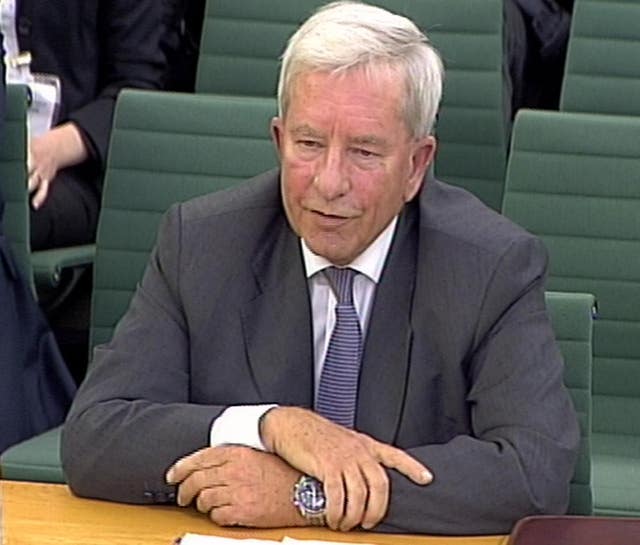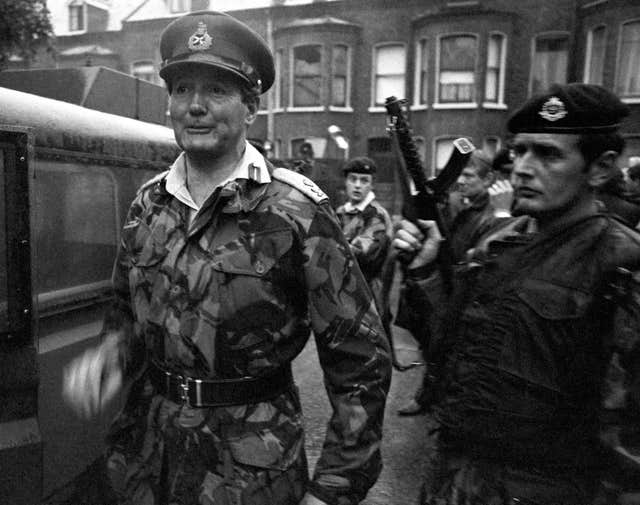Q&A: Seemingly irreconcilable sectarian differences ahead of Bloody Sunday
In January 1972 it was a ‘troubled city with a divided society’, the judge who led one of the UK’s longest public inquiries said.

– Why was the Army in Londonderry on Bloody Sunday?
Londonderry in January 1972 was a “troubled city with a divided society”, the judge who led one of the UK’s longest public inquiries said.
Lord Mark Saville of Newdigate’s report into the killings of the innocent by British troops said there were deep and seemingly irreconcilable differences between predominantly nationalist Catholics and primarily unionist Protestants.
Northern Ireland’s 30-year conflict began in the city with violent clashes between rioters and police in the Bogside estate in August 1969.
The British Army was brought in to aid the police, to restore law and order. It was in the city in that capacity on Bloody Sunday.
During their deployment they faced members of the Provisional IRA and Official IRA, after a split in the organisation over ideology, who used armed violence.
– So why were tensions running high?

A large part of the nationalist area of the city was a no-go area dominated by the IRA where ordinary police could not venture.
Rioting was not uncommon and the soldiers knew them as “Derry Young Hooligans”.
– Were soldiers routinely under threat?
Firearms had been used by both sides in the years before Bloody Sunday. The IRA had thrown nail and petrol bombs.
Over the months and years before the confrontation, civilians, soldiers, police officers and IRA gunmen and bombers had been killed and wounded.
The use of internment without trial of suspected terrorists was viewed in the nationalist community with “abhorrence”, Lord Saville said.
– Why was the Bloody Sunday march organised?
Nationalists and unionists opposed a ban on marches.
By January 1972 the Northern Ireland Civil Rights Association had decided to defy the prohibition.
They organised a march in Londonderry to protest against internment of Catholics without trial.
The authorities believed the security forces should prevent the march from proceeding as planned, fearing that flouting the ban would undermine law and order, the Saville report said.
– What was the Army’s view?

He referenced the “Derry Young Hooligans” as a factor in the continued destruction of the city, and said the Army was “virtually incapable” of dealing with them.
He was coming to the conclusion that the minimum force required to deal with the “Derry Young Hooligans” was, after clear warnings, to shoot selected ringleaders.
This was not put forward as a means of dealing with the civil rights march on Bloody Sunday.
General Ford ordered that 1st Battalion, The Parachute Regiment (1 PARA), which was stationed near Belfast, should travel to Londonderry and be used as the arrest force on Bloody Sunday.
– What happened on the day?
The Saville public inquiry spent several years hearing from witnesses about what happened on January 30 1972.
March organisers realised they would be prevented from reaching Guildhall Square in the city centre and planned to divert.
When the time came for them to re-route in the Bogside some proceeded on the original course and began rioting and were initially dealt with by soldiers showing restraint.
However, sporadic firing had broken out involving members of the Army and the Official IRA.
Members of the Parachute Regiment began attempting to conduct arrests.
Acting against orders, Lieutenant Colonel Derek Wilford deployed soldiers using vehicles on an arrest operation before allowing peaceful demonstrators to leave.
They chased rioters and non-violent marchers down the street.
Within 10 minutes of entering the no-go area of the Bogside, a total of 13 victims were shot dead.
Another died months later from an unrelated medical condition and other civilians were injured.
The support company fired more than 100 rounds using high-velocity rifles.
The Saville report used the soldiers’ ciphers to identify some its authors were sure fired lethal shots. In other cases they recorded those who had probably done so.
None of the casualties shot by soldiers of the support company was armed with a firearm or (with the probable exception of Gerald Donaghey) a bomb, the Saville report said.
The first victim, Jackie Duddy, was running away from the soldiers when he was shot. Jim Wray was shot in the back while lying on the ground already mortally wounded, the Saville report said.

A tribunal of inquiry by the Lord Chief Justice of England and Wales, Lord John Widgery, was decried by nationalists as a whitewash.
Another public inquiry was ordered by former prime minister Tony Blair in 1998 and reported in 2010.
It declared those killed innocent. In then prime minister David Cameron’s words, the killings were unjustified and unjustifiable.





